Are you interested in making a career in Data Science? If your answer is yes, then this is a perfect article for you. In this article, we will help you understand what Data Science is and what Data Science course you may opt to make a successful career in Data Science.
In this article, we will share all the information related to the Data Scientist role, the skills required, the education and qualification to become a Data Scientist, what exactly is a Data Scientist, and much more.
The below diagram will give a glimpse of what is Data Science with examples and what skills it requires.
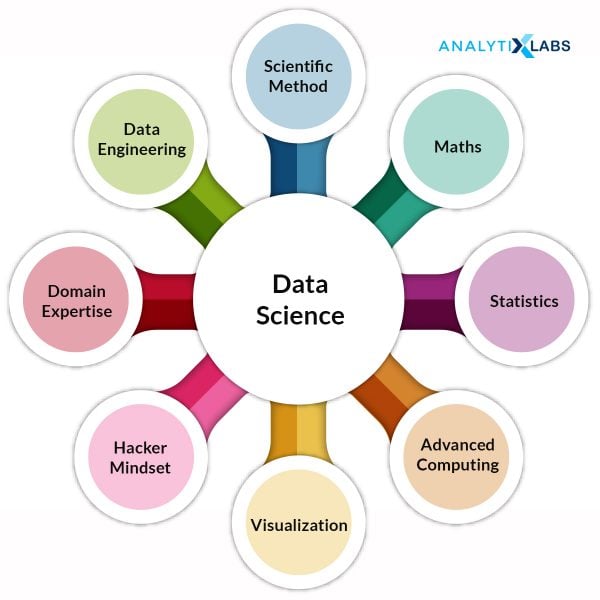
What Is Data Science?
Data Science is a field that gives insights from structured and unstructured data, using different scientific methods and algorithms, and consequently helps in generating insights, making predictions and devising data driver solutions. It uses a large amount of data to get meaningful insights using statistics and computation for decision making.
The data used in Data Science is usually collected from different sources, such as e-commerce sites, surveys, social media, and internet searches. All this access to data has become possible due to the advanced technologies for data collection. This data helps in making predictions and providing profits to the businesses accordingly. Data Science is the most discussed topic in today’s time and is a hot career option due to the great opportunities it has to offer.
Data Science Examples
Let us have a look at the use of Data Science and how it can benefit a business. Below are some Data Science examples to understanding its importance:
- It helps in getting the ideas of what customers would love to purchase or eat according to their previous order history. This will let online food delivery companies understand the requirements of their customers. With the help of Data Science, they can know from what area they are getting maximum orders and on what days of a week. Moreover, they can provide more offers to selective customers on particular orders based on their previous ordering history. This kind of recommendation can be achieved by using the data about customers, including their age, income, browsing history, and prior orders. In this way, the food ordering companies can increase their business by focusing on customer’s requirements.
- Data Science also helps in making future predictions. For example, the airlines can predict the prices for their flights according to the customers’ previous booking history. Airline companies can collect the data of their last flight bookings to understand the patterns at what time of the year, most reservations get made, and for which destinations most of the bookings get made and around what time of the year. Understanding this pattern, airline companies can predict the prices of their flights accordingly and gain maximum profit.
- Data Science also helps in getting recommendations. As an example, Netflix can give recommendations based on the previous browsing history of videos and ratings given by users to the videos. Based on the choice of videos, the new videos’ recommendations can be provided of their interests to the users. This can keep the users busy in using such sites and let the company earn more profits.
Key Areas of Data Science
There are four basic areas related to the Data Science field. The knowledge of these fields makes a person perfect for the role of Data Scientist.
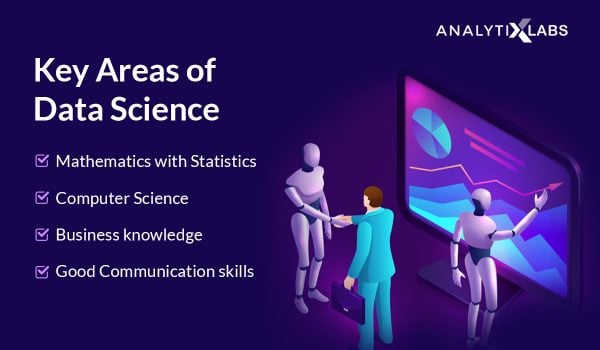
There are some other skills too that Data Scientists must know apart from the discussed four primary areas. These can be referred to as the pillars of Data Science. Usually, people lack expertise in one or two of these areas that makes it difficult for them to perform better in the field. This is because these areas’ knowledge helps a Data Scientist analyze the data thoroughly and make useful insights from it. Meaningful insights help them to make the correct business decision to achieve the final business outcome. Also, they need to connect directly with the client. Therefore communication skills are also a must.
All the work a Data Scientist performs is done using their domain knowledge, excellent communication, applying all statistical and mathematical techniques to get hidden patterns in data, programming language to write algorithms, and so on.
Why Data Science
Let’s try to understand why we need Data Science. There are several reasons for the increasing demand for Data Science. All the sectors are opting for Data Science as it offers a great way to enhance the business. Below are the reasons why Data Science is important.
- Data Science plays an utmost role in the healthcare industry. With the help of patient’s data, predictions can be made, if a person can get infected by a certain disease in the future. Therefore, they can follow some precautions and save themselves from the disease. This has become possible because of Data Science as it can find the relation between different features responsible for causing a disease.
- Data Science has played an essential role in the retail industry, also with the help of a recommendation system. Analyzing the shopping history of the customers, Data Science can get the set of products, which are bought by the customers together. Therefore, if any customer buys one or two products from that set, then he or she can be recommended with the other products in the set.
- Data Science has proved its benefits for e-commerce sites as well. This is done based on the browsing history of the customers. As an example, if a customer has searched for a particular item, then he or she can be recommended with similar products.
- In banking and finance, Data Science plays an important role in risk mitigation by analyzing the creditworthiness of a customer and thereby approving or declining a loan application. Another significant use case is stopping fraudulent transactions like credit card usage, online shopping and insurance claims.
- With the increasing demand for Data Science in all the industries and increased amount of data, the importance of Data Science has increased because Data Science can analyze such a large amount of data to get insights.
- Data Science is helping the companies to connect with their clients in a better and improved way. Clients play a crucial role in the success and profit of a company. With the help of Data Science, companies can find the requirements of their clients and ensure better quality to them.
- Almost all industries, such as health care, travel, and education, have benefitted from Data Science. With the help of analysis done on previous data, future predictions can be made that help these industries to grow their business and gain profits. Therefore, Data Science has gained importance in these industries.
- Big Data is also growing at a very fast pace. With the help of Big Data, the IT industry and Human Resources are able to solve the complex issues successfully and manage resources more efficiently.
- Today, almost all the industries are collecting the data and making it available to apply Data Science. If the data is used correctly, then it can lead to enormous profits for the industries. This is because the predictions can be made based on the previous data, and industries can make decisions for expanding the business. This has become possible with the help of Data Science only.
- Data Science helps industries understand their clients’ requirements and the kind of product the customers seek. As the industries are growing and more products are developing, the amount of data is also multiplying. In such cases, Data Science plays an essential role because it helps in handling the massive amount of data to get useful insights and provide solutions for these industries’ business problems.
Related: Future Scope of Data Science – Career in Data Science
What is the Life Cycle of Data Science?
Now we will look at the life cycle of data science. It is crucial to understand the life cycle of data science, as it will help you understand the various stages of data science projects. The data science life cycle consists of mainly six phases described below:
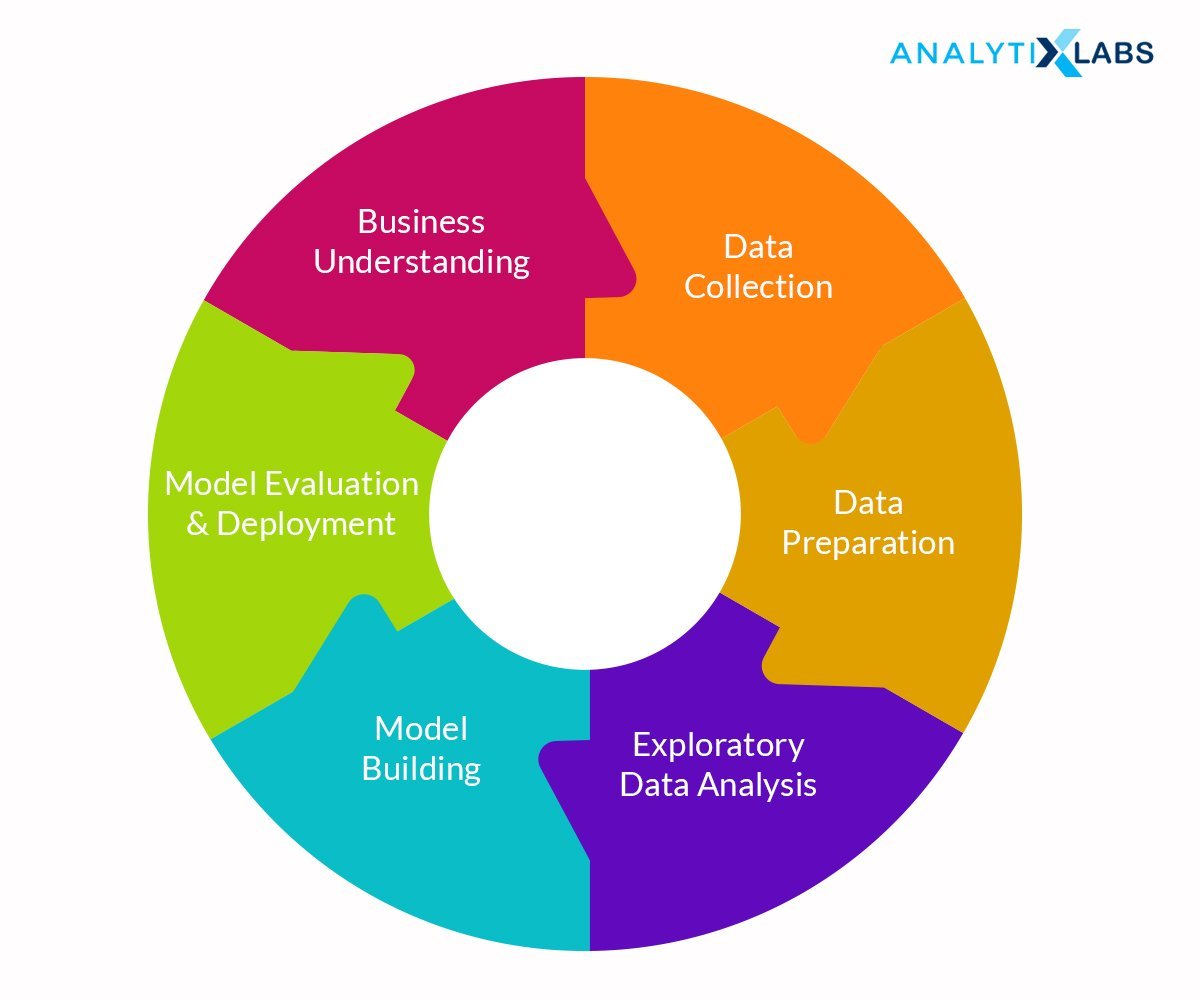
Phase 1: Business Understanding
The first phase consists of defining the business problem because a well-defined problem statement defines a specific goal and is the key to the success of the project. The main goal is to get an understanding of the business problem, the domain of the business problem, and the kind of solution the business seeks. For this, the right questions need to be asked as the right questions can help to understand the business problem well. It should answer the below questions:
1. What is the goal of the business?
2. What does the outcome business want from this business problem?
Phase 2: Data Collection
The next step is to collect the data. Once the business understanding of the problem is obtained, and the problem statement is defined, the next step would be to collect the data. This is also commonly referred to as Data Acquisition in Machine Learning. Data collection is an essential step in data science because data needs to be relevant that can solve the business problem correctly. Though there are many sources to collect the data, it should be made sure that data is collected from a reliable source to ensure that data is correct because trash data will produce a trash result only. Therefore, a data scientist should be very diligent while collecting the data to ensure its reliability and make sure that data is the latest.
Phase 3: Data Preparation
Data preparation is a crucial step in a Data Science project as it helps in cleaning and bringing the data into the shape, which is required for further analysis and modeling. This may also be referred as data cleaning. As part of the data preparation, we treat issues like missing values, outliers and also transform the data into the required format. For example, if the collected data has transaction-level records but for our analyses we may need to roll it up at the customer level. This step is essential in the data science project because, without data cleaning, a good result or outcome cannot be expected out of data. This step only lets data scientists decide how they need to treat this data for further model building.
Phase 4: Exploratory Data Analysis
As part of exploratory data analysis (EDA) data is analyzed using summary statistics and graphically to understand key patterns. This is relatively a simpler step but highly effective to unearth some useless patterns and that may prove to the highly actionable. The exploratory analysis also establishes the relationship among different variables in form of correlations. Here a data scientist develops a stronger understanding of data in terms of which variables may prove to be useful for further analyses that eventually meet the business objectives, and accordingly drop the irrelevant data.
Phase 6: Model Building
Once the data is prepared, and all the hidden insights and hidden patterns from the data are understood, the next step is to build the model. There are two types of data modeling, i.e., descriptive analytics, which involves insights based on historical data and predictive modeling, which involves future predictions. This step of Model Designing is considered the most interesting step in a Data Science project, but a data scientist needs to spend enough time in the prior step to get the most accurate solution. In this step, feature selection is made to decide which features are relevant, and the rest can be removed.
There are different types of model building techniques based on the type of business problem and data. The business problem can be a classification, regression, time series, clustering, or recommendation. Based on this, the relevant algorithm can be selected to apply to the data. The model accuracy is calculated to check if the model built is acceptable and performs during the testing stage.
Phase 5: Model Deployment and Maintenance
Once the model is built, it is ready to deploy in the real world. The deployment can occur offline, on the web, on the cloud, any android or iOS app. Generally, there is some variation in the accuracy of the model built and the model deployed. This is because the model is built on a certain amount of data and is deployed on different data. The Data Science project is monitored and maintained to work in the long run. If there is any performance downgrade, then relevant changes can be made as a part of the maintenance.
This is the life cycle of a Data Science project that occurs in iterations. These steps are repeated until a good model giving good results to the business problem gets achieved.
Related: What is the Data Science Life Cycle? | Everything you need to know
What does a Data Scientist Do?
A Data Scientist is involved throughout the project lifecycle explained above. But the day-to-day activity of a Data Scientist varies as there are different requirements for a data scientist’s role. Specific skills are expected from a Data Scientist. These skills include playing with the data, robust statistical, mathematical knowledge, problem-solving skills, and an analytical mindset. Check this out to know more about the Data Scientist Job Description and Role of Data Scientist.
Who Exactly is a Data Scientist?
Let us explore more about who exactly is a Data Scientist.
The main role of the Data Scientist involves playing with data that includes data collection from various sources, performing data cleaning, and transforming the raw data into business insights. Data Cleaning and preparation is a very important part of a Data Scientist’s job, and for this, a Data Scientist needs to be an expert in statistics, mathematics, machine learning, and programming languages.
After Data Cleaning, Exploratory Data Analysis (EDA) is performed to find visual insights using different visualization tools. This step is important because the correct patterns help in building an accurate model.
The next step involves statistical or machine learning modeling, followed by model testing and implementation.
If you want to start a career as a Data Scientist, then have a look at the below-given prerequisites for this:
- Knowledge of statistic, mathematics, information technology or computer science
- Good problem-solving skills
- Able to work in a team
- Love to play with the data
- Have good communication skills
- Ready to learn the latest technologies
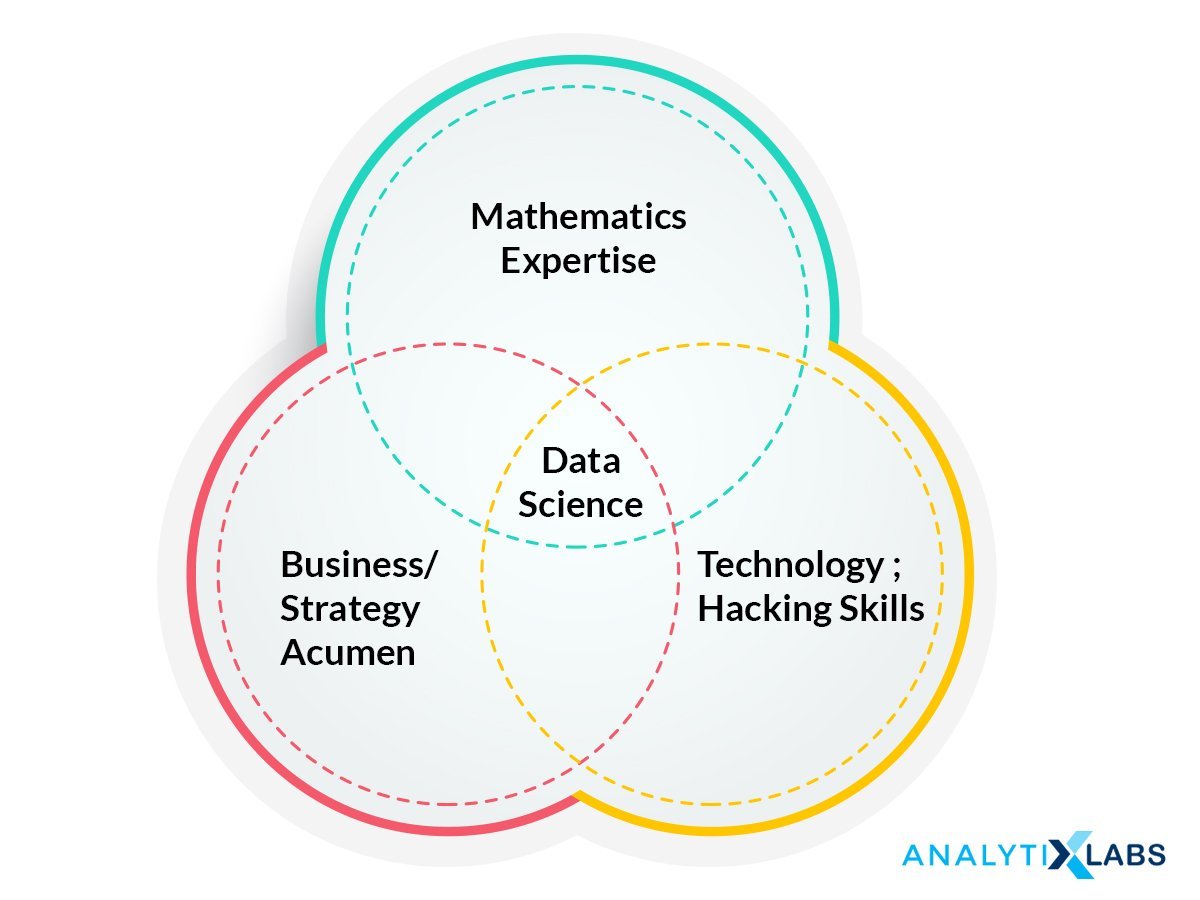
Mathematical computation is the main skill that a Data Scientist needs to have in addition to the creative thinking and analytical mindset. They should be able to analyze the data and find hidden trends. They need to ask the right sets of questions to get the business understanding and create a business problem so that the required output can be expected. They also should have knowledge of Data Modeling and different Machine Learning algorithms.
In addition to these skills, knowledge of programming languages such as R and Python is a must. They might work with Data Engineers and Data Analysts, but they have to use their own methodologies and create value addition. They should know visualization tools to see the patterns.
A Data Scientist has to work closely with clients so that they can understand the business problem well and get the most accurate solutions to meet their requirements. They perform different tasks from creating algorithms, data modeling, to extracting business insights. A Data Scientist performs below a set of tasks while analyzing data –
- Identify the data analytics problem that can give more business to the organization.
- Discover solutions after working on the data.
- Understanding of all the critical datasets and variables.
- Collect the structured and unstructured data from reliable sources.
- Work on unstructured data, such as images and videos.
- Analyze data and find out the hidden patterns and insights.
- Clean data by removing the missing values and outliers to get accuracy.
- Apply different models and algorithms to find out the business solutions.
- Communicate the insights to clients with the help of visualization tools.
You may also like to read: Is Data Scientist an IT Job | Learn About Various Roles & Skills
Data Science skills
Below are some of the skills that a Data Scientist must have –
- Statistics: Data scientists must have a good knowledge of statistical techniques so that they can find the hidden pattern in data and correlation between different features in data.
- Machine Learning: Data scientists must know different algorithms for building a model so that the machine can be trained.
- Computer Science: A Data Scientist must be able to apply different principles of Computer Science, including software engineering, database system, Artificial Intelligence, and numerical analysis.
- Programming: A Data Scientist must know at least one programming language to the right algorithms. They must be comfortable in writing code in programming languages such as Python, R, and SQL.
- Analytical Thinking: A Data Scientist must think analytically to solve the business problems.
- Critical Thinking: A Data Scientist must have critical thinking ability to analyze the facts before concluding.
- Interpersonal Skills: A Data Scientist must have excellent communication skills to interact with different audiences across the organization.
- Business Intuition: A Data Scientist must be able to communicate with clients to understand the problems.
Related: How to Become a Data Scientist? A Step by Step Guide
Tools a Data Scientist Uses:
There are a variety of tools that Data Scientists use in their day-to-day life. These tools can be Programming Tools, Data Analysis Tools, or Statistical Programming Tools.
- Python: Python is a versatile programming language that is used most by Data Scientists. Its most important application is used in the field of Machine Learning. It has many libraries that make it perfect for handling Data Science related work.
- R Programming: R is one of the essential statistical programming tools, which is mainly used by Data Scientists to perform a detailed analysis of large data to find insights.
- SQL: It is also a valuable tool used by a Data Scientist. It helps them in working on DBMS and structured data. A Data Engineer also uses this tool.
- Tableau: This is a top-rated data visualization tool among Data Scientists because of its amazing reporting capabilities. This tool makes it simple to visualize the data and show the results to clients.
- Hadoop: It is an open-source and powerful tool that is used by every Data Scientist.
- SAS: SAS is an advanced tool for analysis, which many data analysts use. It has many powerful features, such as analyzing, extracting, and reporting, which makes it a popular tool. Also, it has a great GUI that anyone can use it easily, and Data Scientists use it to convert the data into business insights.
Various Roles in Data Science
There are different roles in Data Science, which are usually confused with each other. Below are the most common job roles in Data Science:
∙ Data Scientists
∙ Data Analysts
∙ Data Engineers
Below are the Data Science job roles in more details
Data Scientists
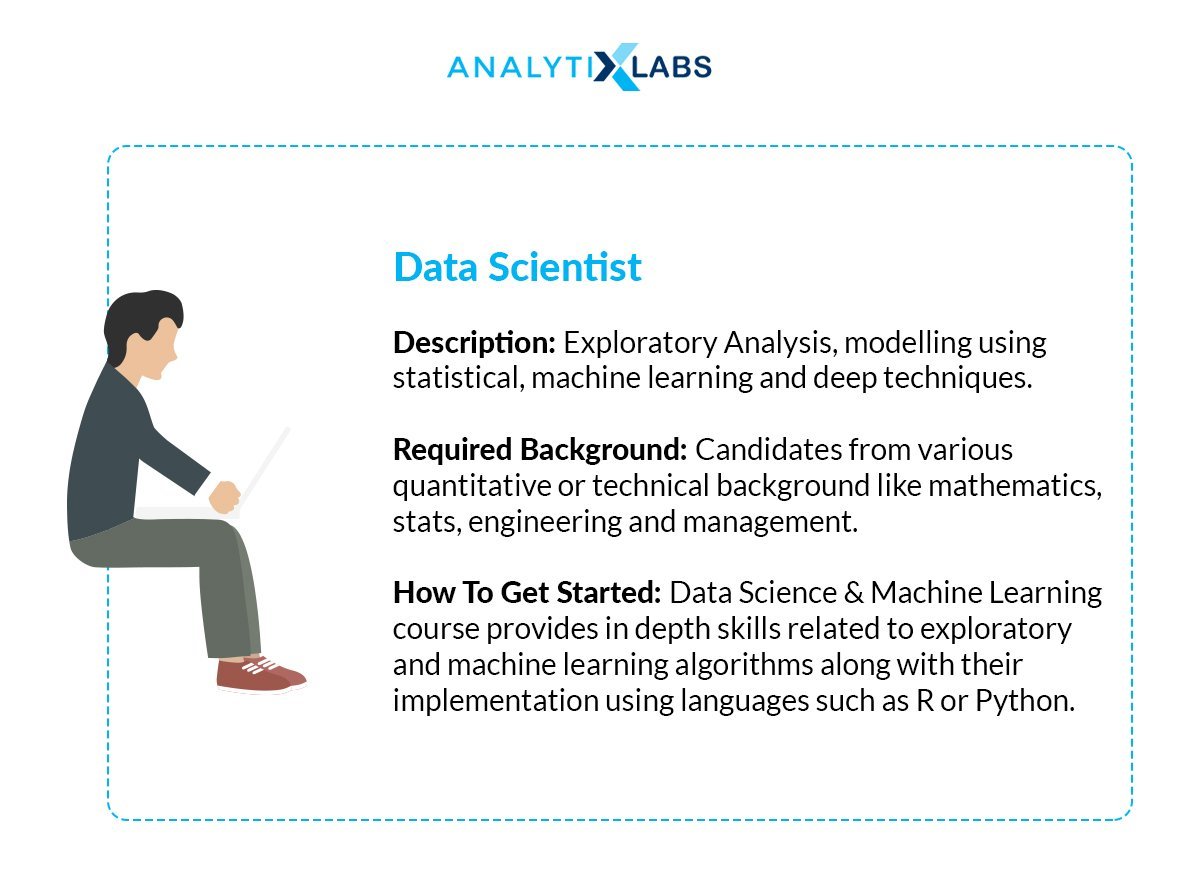
This role needs a good understanding of statistics and mathematics to apply to the data. Data Scientists use their statistical and mathematical knowledge to solve business problems. The Data Scientists should be able to create a business proposition, build predictive models, solve business problems, and so a little storytelling to show data to clients as visualizations. While statisticians create models by applying statistical methods on data, Data Scientists with the knowledge of computer programming can make better business decisions, solve real-world business problems, and implement their knowledge practically. Therefore, a Data Scientist should be expertise in mathematics, statistics, and computer programming.
Data Analyst
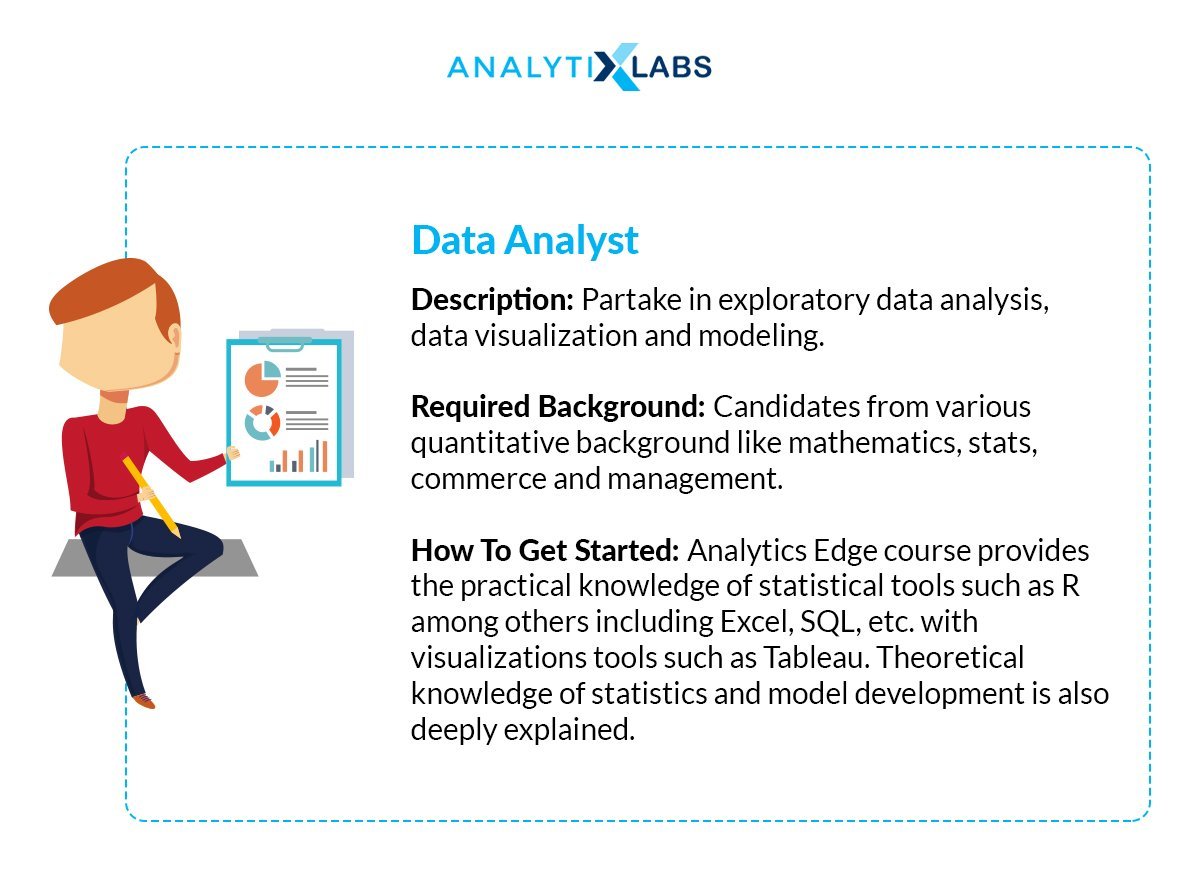
The role of a Data Analyst is quite similar to a Data Scientist in terms of responsibilities, and skills required. The skills shared between these two roles include SQL and data query knowledge, data preparation and cleaning, applying statistical and mathematical methods to find the insights, data visualizations, and data reporting.
The main difference between the two roles is that Data Analysts do not need to be skilled in programming languages and do not need to perform data modeling or have the knowledge of machine learning.
The tools used by both Data Scientists and Data Analysts are also different. The tools used by Data Analysts are Tableau, Microsoft Excel, SAP, SAS, and Qlik.
Data Analysts also perform the task of data mining and data modeling, but they use SAS, Rapid Miner, KNIME, and IBM SPSS Moderator. They are provided with the problem statement and the goal. They just have to perform the data analysis and deliver data reporting to the managers.
Data Engineer
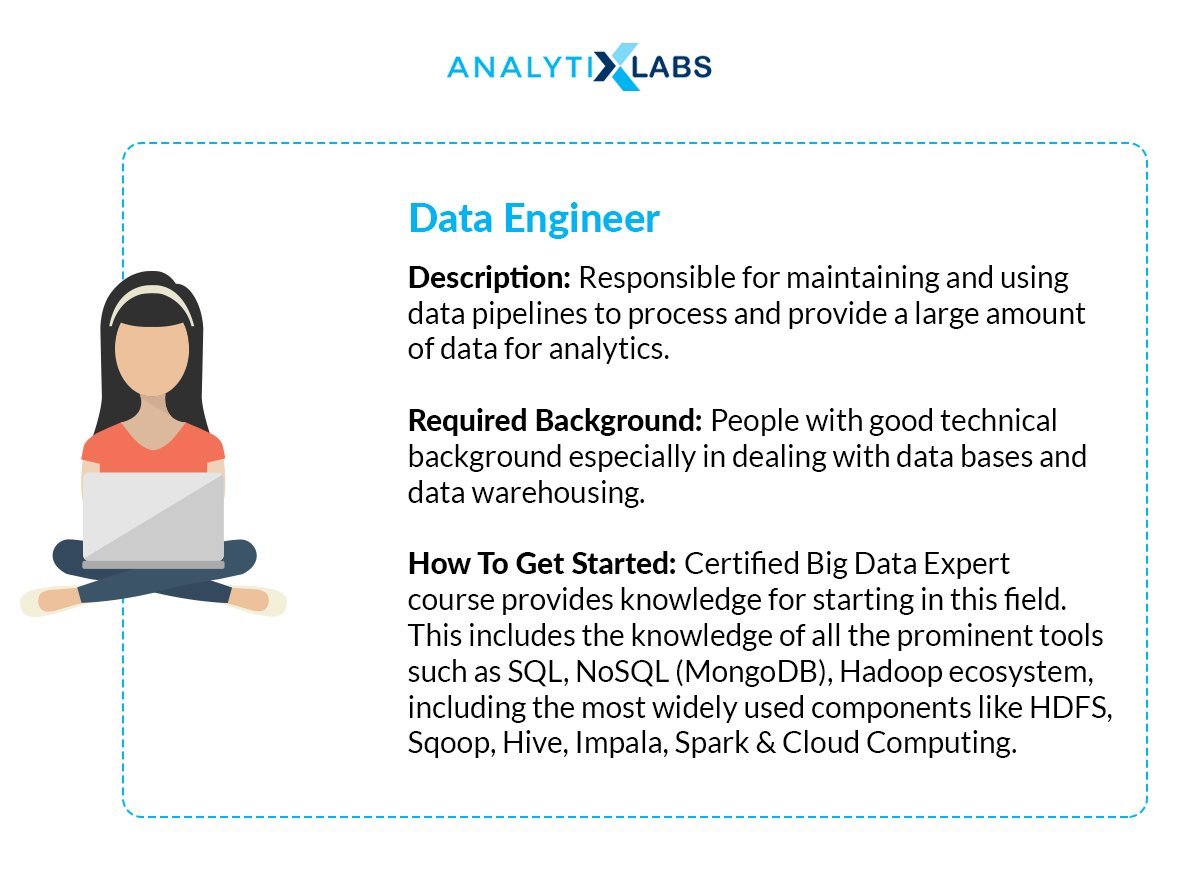
In this age of big data, data engineering has become a prominent job role. Data Engineers do not deal much with the statistics, mathematics, data modeling, and data analysis, as the Data Scientists do. Data Engineers are a kind of Data Architect and have to deal with data architecture, data flow, computing, and data storage.
The data that Data Engineers use is collected from different sources and thus needs to be extracted, transformed, and stored in such a way that it becomes improved to be used by Data Scientists.
Therefore, Data Engineers have to set up an infrastructure for data architecture. For this, they need strong skills in writing data queries to fetch the data from the database and make enhancements and need skills similar to one required in DevOps roles. Also, they should have a good understanding of all the database technologies and database management systems such as database design, data warehousing, HBase, and Hadoop. In addition to architecture, they also have to work on the non-functional requirements, including data backups, scalability, durability, availability, security, and reliability.
Data Science Courses Available for Beginners
The jobs in the Data Science role are becoming exceedingly popular, and most of the employers need Data Scientists with a master’s degree in mathematics, statistics, or Computer Science. But the candidates looking for a career in Data Science, have to start with a foundation course in statistics, mathematics, and Computer Science, and then opt for the master’s degree in Data Analyst or Data Scientists. The beginner level courses help students to get skills such as statistical modeling, predictive analytics, data visualization, decision making, big data, and storytelling.
What is Data Science Course
Let us explore what is Data Science course that you can opt for making a career in Data Science:
Earning a Degree in Data Analytics
The courses of Data Analytics and Data Science learning teach students how to apply statistical techniques, business intelligence, and analytical systems to reach their targets. With basic knowledge, students can solve complex problems and find business solutions. They are also taught with handling uncertain datasets and unite datasets collected from different sources.
The master’s program helps students in learning to use different tools and methods for Data Analysis in a project. The graduate programs in Data Science makes students specialized in the field technically and make them industry-ready. The students work on real-world data in their projects using all the learned skills and help them build a great portfolio. All in all, the practical knowledge gained in the courses is the key factor of these programs.
There are different paths that you can follow to be a Data Scientist as a Beginner.
Post Graduate Certification Programs:
Professional certification courses offered by eminent Data Science Institutes is one of the most effective ways to build data science skills. AnalytixLabs, rated as India’s top Data Science Institute since 2011, has job-oriented and industry-focussed PG Data Science course.
AnalytixLabs also offers a great degree of flexibility through multiple learning modes i.e. Classroom, online and blended. These programs deliver exceptionally high ROI based on the quality of the training, extensive curriculum, student and career support.
Let us see the top 3 offerings in this segment:
- Data Science using Python: A succinct 220 hours of learning with a very strong focus on Data Science & Machine Learning skills using the most popular data science tool i.e. Python. Best suited for the aspirant with some technical background or prior exposure to dealing with data.
- Advance Big Data Science: This is a 380 hours dual specialization program, which includes Data Science using Python + Certified Big Data Expert course. Ideal for candidates from data warehousing and database background who want to foray into the Data Science domain and advance their data engineering skills one new-age Big Data platforms.
- Business Analytics 360: This is an extensive 450 hours program, which starts from the very elementary level of analytics skills such as Excel, SQL and Tableau and graduates till Data Science & ML with R & Python. Best suited for beginners without any technical or prior analytics exposure.
You may also like to read: Top Data Science Courses & Free Learning Resources
B.Sc. in Data Science:
You can opt for a bachelor’s in Data Science, which is a 3-year course. The course is available at below universities:
- IIT Madras online degree
- NIMAS
- Navrachana University
- KR Mangalam University
- Sri Ramchandra Institute of Higher Education and Research
- Manav Rachna International Institute of Research and Studies.
As part of the course, students are taught with the important concepts of data science, including Statistics, Business Analytics, Machine Learning, Artificial Intelligence, and Computer Science. The course helps students to work on real-world data to get hands-on experience as Data Science is a high demand course and has a big scope in the future. Therefore these courses are becoming popular. Students passed in 12th with subjects Physics, Mathematics, and Chemistry are eligible for this course, though the admissions are given on a merit basis created based on the Entrance Test at the university level.
Bachelor’s in Mathematics and Bachelors in Statistics
Students can also start with these courses after completing their 12th and then opt for a master’s degree in data science. This is because data science is new, and not many colleges and universities are offering bachelors in data science. The bachelor’s in mathematics, and bachelor’s in Statistics are 3 years of courses offered by most colleges and universities in India. These courses make students familiar with the different statistical and mathematical techniques that can be applied to data in Data Science.
B. Tech in Big Data Analytics
It is a 4 years degree program of engineering offered by below-given colleges:
- NIIT University
- PEC University of Technology
- Banasthali Vidyapith
- Vishwakarma Institute of Technology
- Arya Institute of Engineering and Technology
- Graphic Era University
- DIT University
- IIT
This Bachelor’s degree provides training to the students on various techniques used in Big Data, statistics, Data Visualization, Data Warehousing, and Data Mining. In addition to theoretical knowledge, they also help students to have hands-on experience by providing them with real-world data, thus make the students professional in predicting modeling, Data Science, and analytics. The admission to the course is made based on the entrance exam after 10+2. This is a great opportunity for those who want to make a career in Data Science by making a foundation in this field.
PG Diploma in Data Science
This is a 2 years course available both part-time as well as full-time for graduates. This course is offered by many universities in India, such as BITS Pilani and IITs. The course covers concepts such as statistics, mathematics, Machine Learning, Data Visualization, and Data Analysis along with project experience. This course is getting more popular because both beginners can opt it after completing their graduation as well as the professionals looking for a career transition into Data Science. The course trains the people in Data Science and makes them ready for the role.
Master’s in Data Science
This is a 2-year post-graduate degree in Data Science offered by below institutes:
- IIM Ahmedabad
- IITM
- ICFAI Tech School
- St. Xavier’s College
- St. Joseph University
- John Hopkins, USA
The admission to the course is based on the entrance exam and the personal interview. This is the perfect course for those who want to get deep knowledge in Data Science or make a career in Data Science. The pass-outs join MNCs as Data Scientists or lecturers in a college or a university. This is quite a popular course offering a career in Data Science.
Conclusion
As per the research, the job of Data Scientists is the most in-demand job role in recent times. All the industries are making use of Data Science to find solutions for their business and make the most of the data they have.
You may also like to read:
1. Data Science vs Data Analytics – Which Career to Opt?
2. Top 20 (Interesting) Data Science Projects with Data
3. Data Science vs. Computer Science; Skills & Career Opportunities

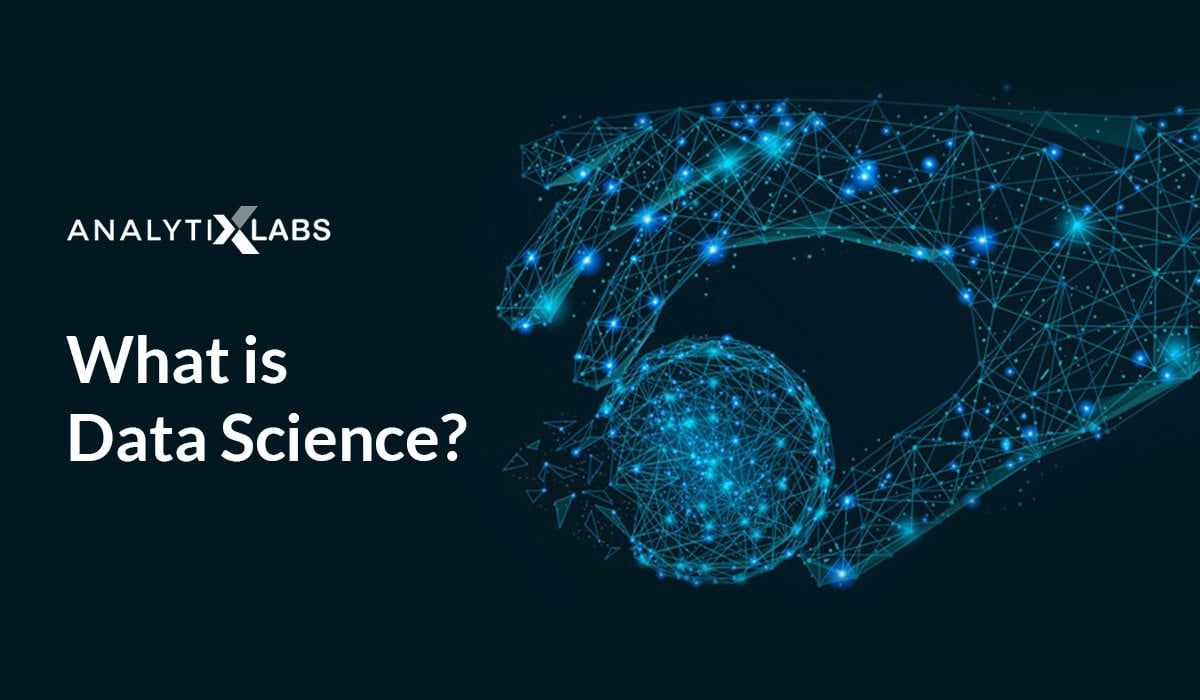



![Tree Traversal in Data Structure Using Python [with Codes] tree traversal in data structure](https://www.analytixlabs.co.in/blog/wp-content/uploads/2025/01/Cover-Image-1-370x245.jpg)



2 Comments
You write with such insight and clarity. Your articles are always helpful, which makes me feel better about my own writing skills.
Become a Data Scientist and learn Statistical Analysis, Machine Learning, Predictive Analytics, at AnalytixLabs. Undoubtedly, one of the finest learning platforms in India.